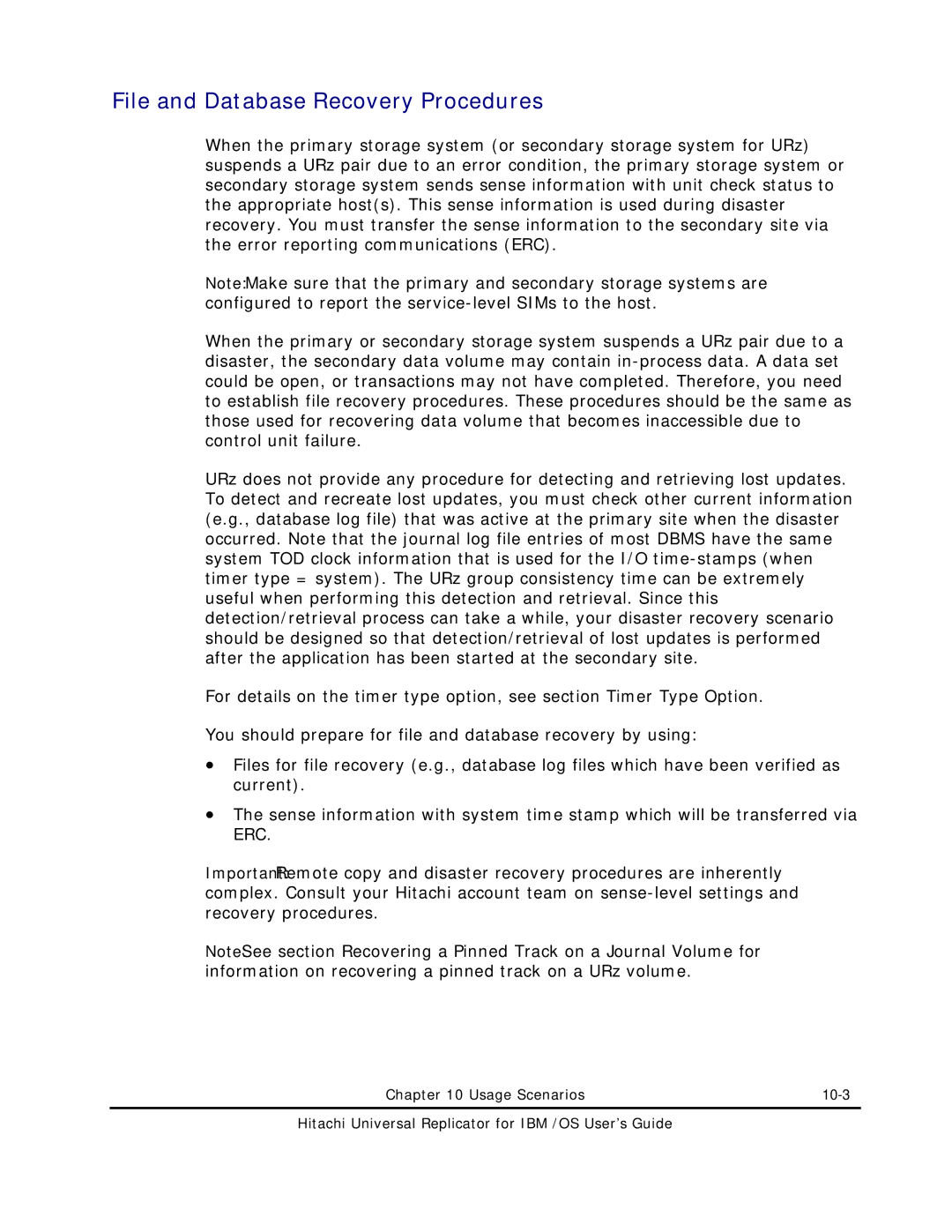File and Database Recovery Procedures
When the primary storage system (or secondary storage system for URz) suspends a URz pair due to an error condition, the primary storage system or secondary storage system sends sense information with unit check status to the appropriate host(s). This sense information is used during disaster recovery. You must transfer the sense information to the secondary site via the error reporting communications (ERC).
Note: Make sure that the primary and secondary storage systems are configured to report the
When the primary or secondary storage system suspends a URz pair due to a disaster, the secondary data volume may contain
URz does not provide any procedure for detecting and retrieving lost updates. To detect and recreate lost updates, you must check other current information (e.g., database log file) that was active at the primary site when the disaster occurred. Note that the journal log file entries of most DBMS have the same system TOD clock information that is used for the I/O
For details on the timer type option, see section Timer Type Option.
You should prepare for file and database recovery by using:
•Files for file recovery (e.g., database log files which have been verified as current).
•The sense information with system time stamp which will be transferred via ERC.
Important: Remote copy and disaster recovery procedures are inherently complex. Consult your Hitachi account team on
Note: See section Recovering a Pinned Track on a Journal Volume for information on recovering a pinned track on a URz volume.
Chapter 10 Usage Scenarios |
